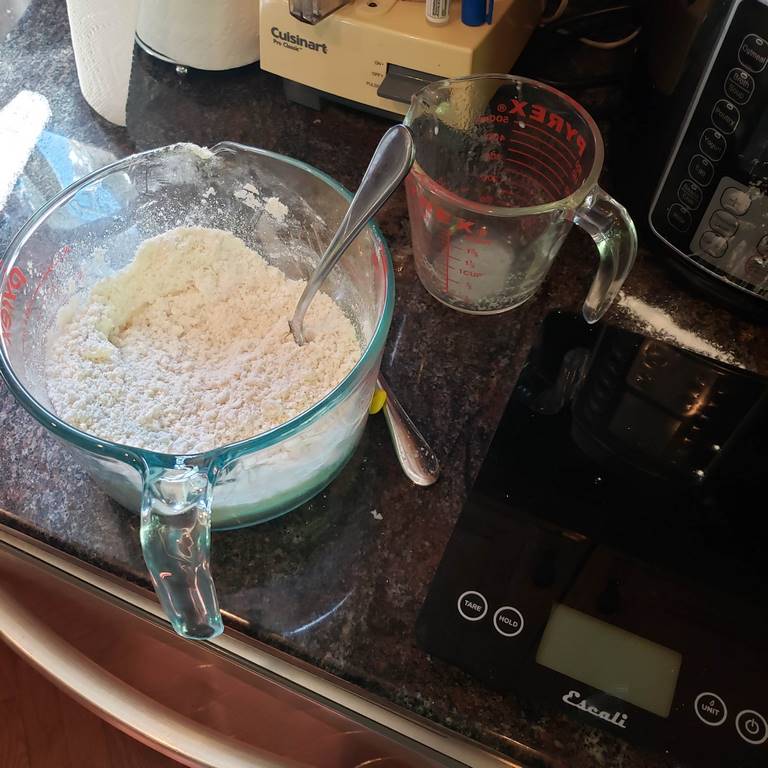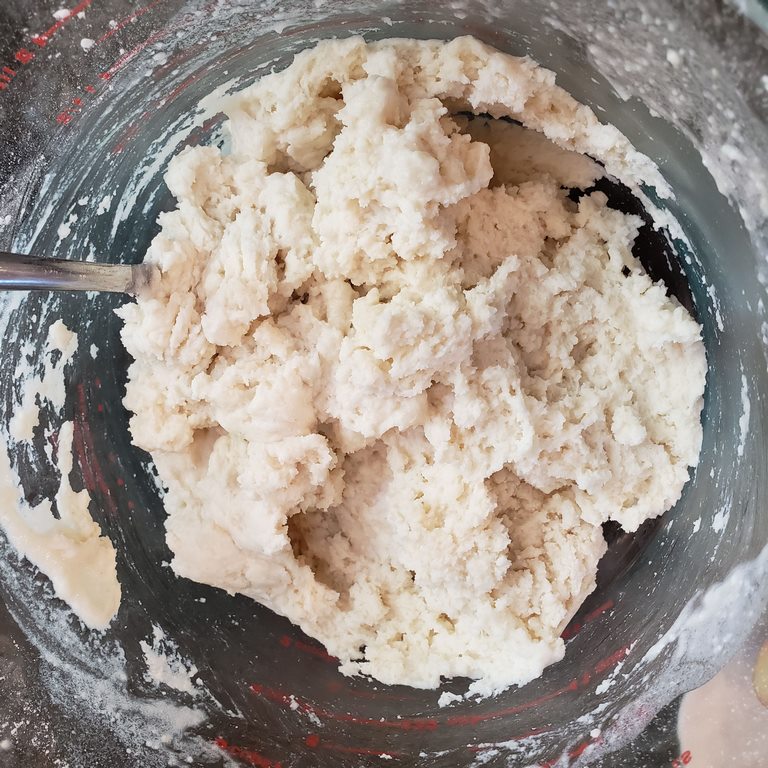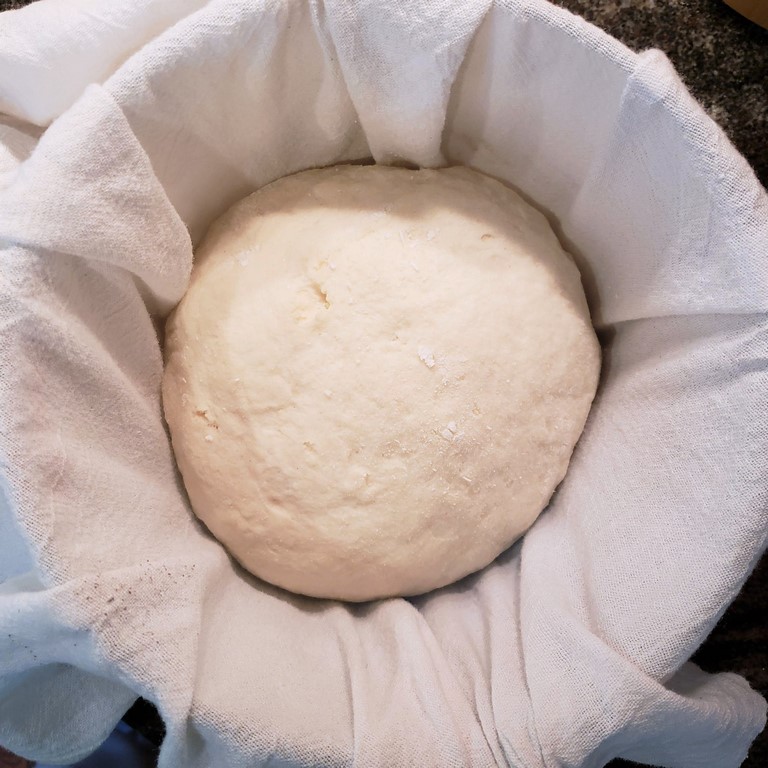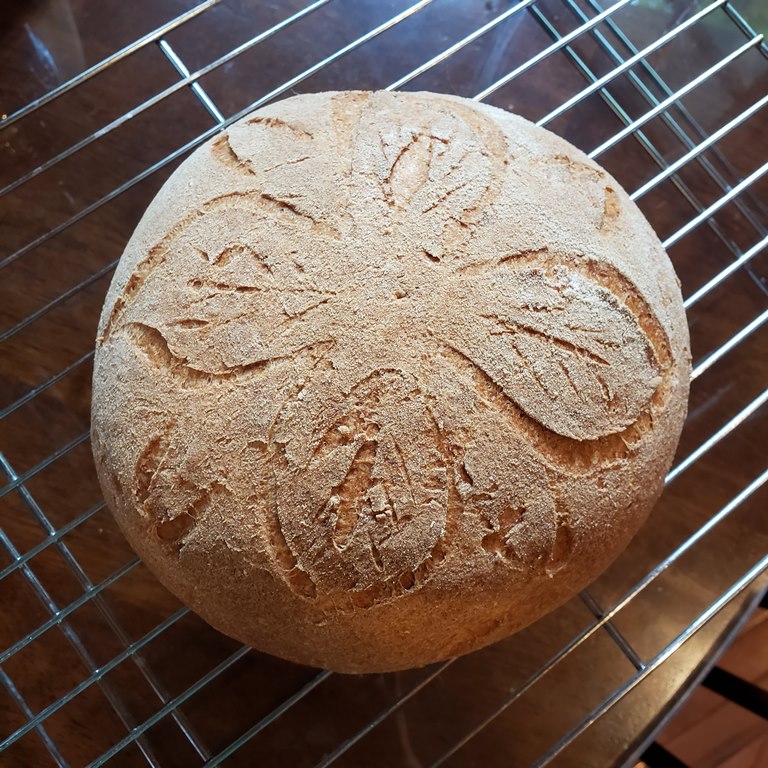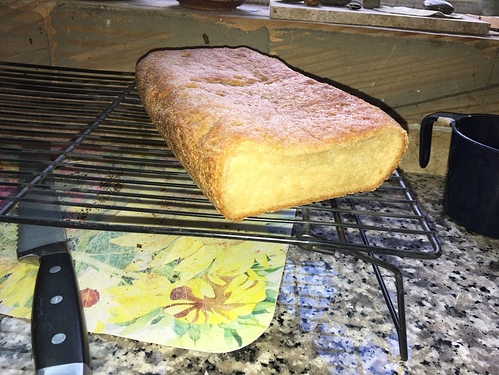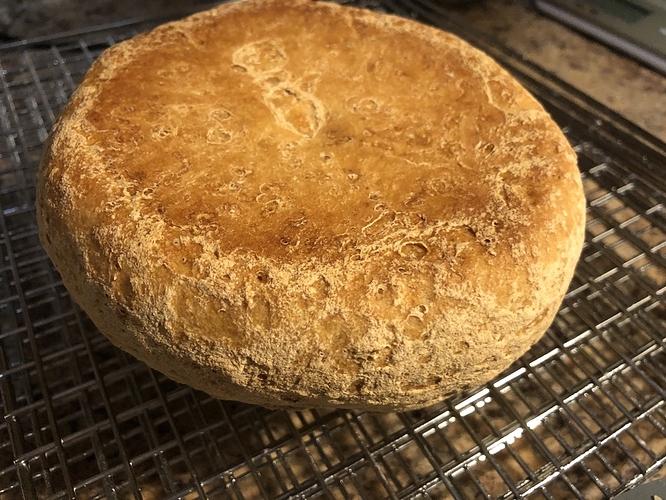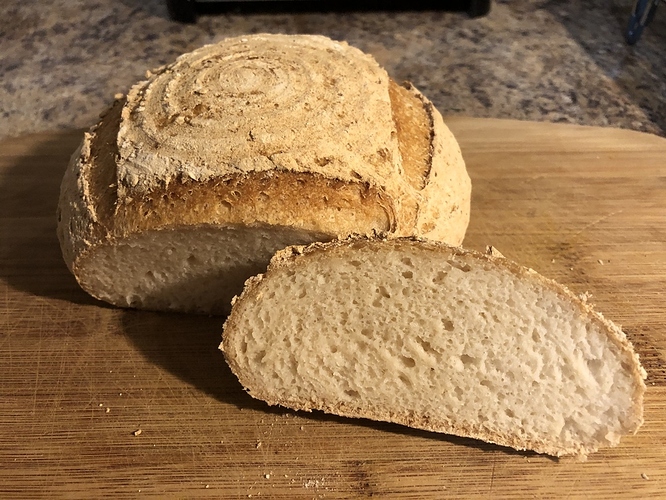The mix came out like soup! measured everything perfectly!
So, you clearly did not convert to cups correctly. So many people are getting a soupy dough. I did too! You should fix that! I recommend only measuring the ingrediants by weight.
This is the F#$% up. It’s super dense.
We don’t do dairy either, and so we make our own nut milk mix. Our finished loaf is turning out very dense. Should we try adding more yeast? Is there a workaround?
Hello Eric:
I was so excited about trying this recipe but after 2 tries I am still getting an almost soupy mix…Why? Every ingredient was weighed exactly.
What is missing.?
Hello Eric:
What can I do to if the dough fails to rise? Can I add some baking powder or baking soda with apple cider vinegar?
Can’t see why that wouldn’t work. Mix well then into a loaf pan and bake in a preheated oven.
@bowlerwin @TanyaStraley @WalkingintheForest @nikorami
@eric suggested we re-test the recipe. I’ll be doing that today and will update the hydration and post any additional tips.
I baked two batches of this bread yesterday and had good outcomes both times. It tastes delicious by the way!
In both batches, I warmed the milk to approx. 100F, added the cold butter in chunks to it, then poured that mixture into the dry ingredients and smashed it around with a fork. When I was satisfied the butter chunks were small, I added the water and mixed some more. Then I kneaded briefly by hand, before the 15-minute rest.
My hunch is that the too-wet feeling some people are getting is at the initial mixing, but with a bit of time passing, maybe 5 minutes, the dough feels much dryer. As for the dough not rising, I didn’t have this problem as long as I gave it 1.5 hours at temps around 80F. I was using quite old but recently proven functional active yeast.
Both bakes I did were in free-form style, and the final loaves were not large. If I were making this in a loaf pan, I might double the recipe, or at least 1.5x it.
For the first bake, I reduced the milk and water. This made the dough less smooth than Eric’s in the video, but it didn’t crack and it baked up quite nicely, about 5 minutes faster.
110g milk (instead of 130g)
175g water (instead of 195g)
Working in warm milk and butter with a fork
Baked up, and sliced while a bit warm
For the second round, I used the full amounts of milk and water, and I found the dough easier to handle and smoother. The bread also turned out great.
After I mixed in the water
Brief kneading before the 15-minute rest
Start of the 1.5 hour rise (warm lit oven)
End of the 1.5 hour rise
All baked up
Hi Melissa:
Thanks for taking the time to test this recipe again. I appreciate you sharing the warming of the milk as I took mine from the fridge and added it to the mix - so may have attributed to little or no rise.
Just to clarify, according to your comment above a picture shown (start of 1.5 hour rise) - did you proof the dough in an oven? Can you explain?
Thanks again
That makes sense – cold milk and cold butter will slow things down.
I’ve been using my oven as a proofing box for a long time and determined it doesn’t get super hot in there (stays under 85F) with the light on. You should confirm this with your particular oven the first time you use it too. To get the warmth going, I hit Bake, count to 20, and then turn the oven off. I let the dough rise for a few hours and then repeat – sourdough can be many hours / iterations of this.
Hi, Melissa,
I’ve tried this a couple of times and it turns out OK, but it falls in the middle. Any hints on what I should be trying? (Less proofing? Less liquid?)
Thanks,
-Dan
Hi Dan,
It looks a little bit like when a cake or quick bread falls in the middle because it’s underdone. In that scenario, the bread would look fine and then start to sag as it cools.
Is that how it plays out?
Are you taking the internal temperature of the bread before you decide it’s done?
If instead the bread is kind of never rising in the middle then I would lean toward over proofed or overhydrated. But that’s really me hazarding a guess because I’ve never pushed this dough very far in the proofing or hydration.
Hi, Melissa,
It seems to fall after I take it out. I also am new to GF baking so not really sure how much it should rise before baking. Unfortunately, my thermometer isn’t functioning right now and I need to fix/replace it!
So, I already am baking it longer than called for, so maybe I should increase the temperature to 425 or 450?
Thanks for your help!
-Dan
I dabbled a bit I to gluten free baking a little while back. Took me some time to get consistent good results. Once I learned what to expect, and that meant doing away with everything I expected from baking with gluten, I managed to get a good feel it. I’m back onto gluten but thought I might chime in with some observations.
1: it looks like you’re baking in a loaf pan that’s too big for the dough size. If you’re going down the loaf pan route then even if you get the hydration a bit off the pan should be able to support it for a better rise. That means filling it more or using a smaller pan.
2: I once managed to ruin a good loaf by taking it out too early. It looked baked on the outside and when I took it out it sank. I thought I’d ruined the recipe from much earlier on however when I cut into it the dough wasn’t baked through properly. It was annoying as it did have potential to be a good loaf and I ruined it at the last moment.
3: a little trial and error may be needed. Perhaps a bit lower hydration and/or baking it a but earlier in case you’re over proofing and/or baking for longer. If its done on the outside but not so in the middle then lower temps for longer may be needed.
I’d love to get my hands on this four to try it myself sometime but I live in the UK so not feasible.
I think you could increase the bake time and temp a bit, and cover it for longer with foil so it doesn’t brown too much.
Has anyone tried variations on this basic version, like a seeded loaf or cranberry walnut? Imagine it would be easy enough to add the new ingredients during the kneading process.
Who’s ventured out a bit?
There is no salt in this recipe. Is that intentional?
@schillingly I don’t know if the recipe below is the recipe you’re using, but it does call for salt at the end of the ingredient list, about 10g or 2 tsp.
Baking blessings,
Leah
I just pulled my first GF loaf from the oven, based on this recipe but using soy/oat milk and cultured almond butter since I don’t eat dairy. Too hot to try slicing yet but it looks beautiful. Attached photos to show results.image|666x500
I used Miyoko cultured almond-based nondairy butter and it worked great!

